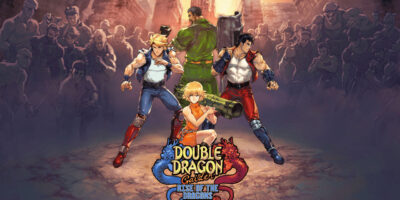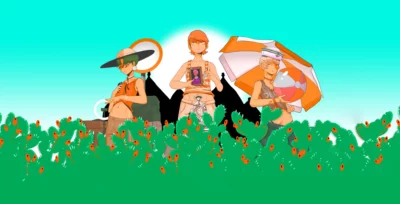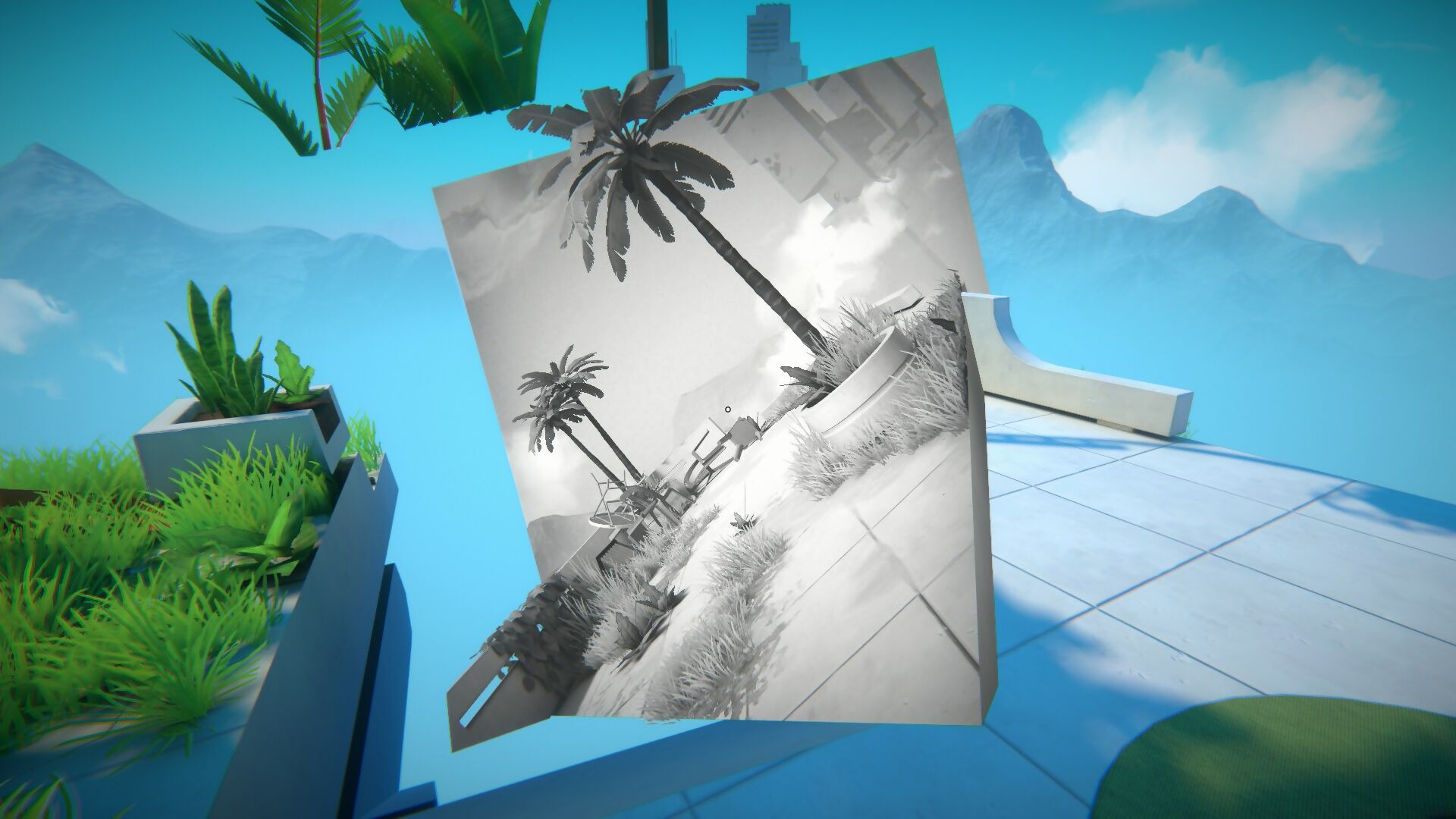
Viewfinder features a mind-bending photographic concept that its puzzle design can’t quite match. Here’s our review:
Few will deny the brilliance of Viewfinder’s signature trick. Like a magician performing an illusion whose method escapes all logic, when it’s first revealed you can only gasp and applaud. To wit: pick up a photograph, hold it in front of your face, nice and close, maybe rotate it a little, then let go. The image transforms into a solid 3D structure. The ground in the picture now stretches out like a bridge in front of you. A doorway can now be entered, leading to another part of the world.
Put another way, it’s like those old Road Runner cartoons where Wile E Coyote paints the side of a cliff to look like a tunnel, hoping the road runner will fall for the ruse and smash into the rock. Then the impossible occurs, and his would-be prey to races on through instead. Viewfinder, though, expands that surreal comedic nugget into a whole perspective-toying puzzle game, adding to a curious modern sub-genre that’s stemmed out from Portal into Superliminal, Maquette and more. As with all these games, Viewfinder buds from a single dazzling mechanic that instantly sets the imagination whirling.
Except, while the Portal games went on to squeeze every drop of potential from that inspired concept with wicked intelligence, Superliminal and Maquette always seemed a little overawed by what they’ve unleashed, and now Viewfinder follows that trend. Although developer Sad Owl Studios keeps lobbing new wood on the fire to fuel its core idea, its puzzle design rarely burns as brightly as it initially promises, falling short of satisfying the imagination it inspires.
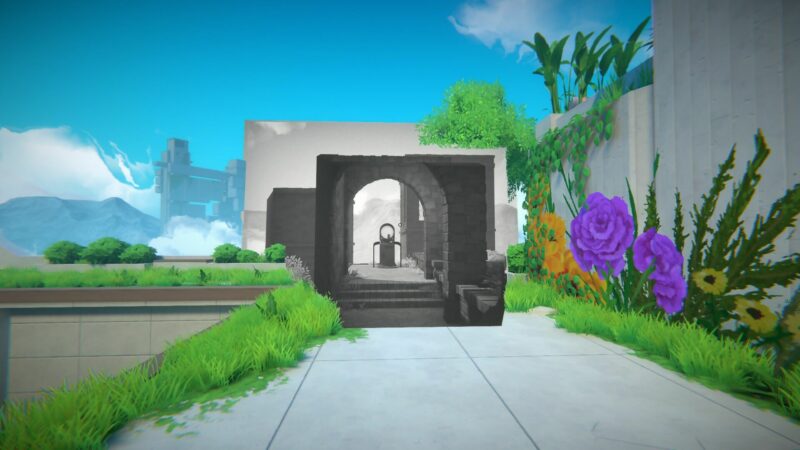
Credit: Sad Owl Studios.
If there’s a key issue here, perhaps it’s that Viewfinder places a power in your hands that the game world struggles to contain. Especially once you shift from picking up already-taken photos around the abstract levels to snapping your own with a Polaroid style camera, the freedom you have to affect your environments can be the enemy of elegant solutions. If, say, the obstacle between you and the exit is a solid brick wall, it’s little trouble to snap a pic of empty space then plant it in a way that bites a chunk out of the offending blockage.
It’s not unusual in Viewfinder, in fact, to wonder if you’ve stumbled into some brute-force sequence break, because surely the solution wasn’t designed to be so brusque. When you’re allowed multiple pics to work with, for example, sometimes you succeed through the weight of numbers alone, summoning more scenery with each frame to extend further towards a remote target. It’s certainly possible that some situations are designed to indulge a range of methods, and the game is merely providing the tools to explore your own brand of creativity. But when whole chunks of chapters pass with minimal friction, you might wonder whether your creative faculties are being stimulated enough to begin with.
It’s not that Viewfinder is short on variety either, with each of its five chapters introducing new means of manipulation to toy with, or optical illusions to untangle. The final pair should sporadically force you to shift your brain up a couple of gears too, not least when they furnish levels with a solid substance that can’t be photographed or destroyed. Objectives, meanwhile, range from locating (or reproducing) batteries to power the exit teleporter, completing circuits triggered by sound waves, or lining up fragments of 2D images until they become a 3D whole.
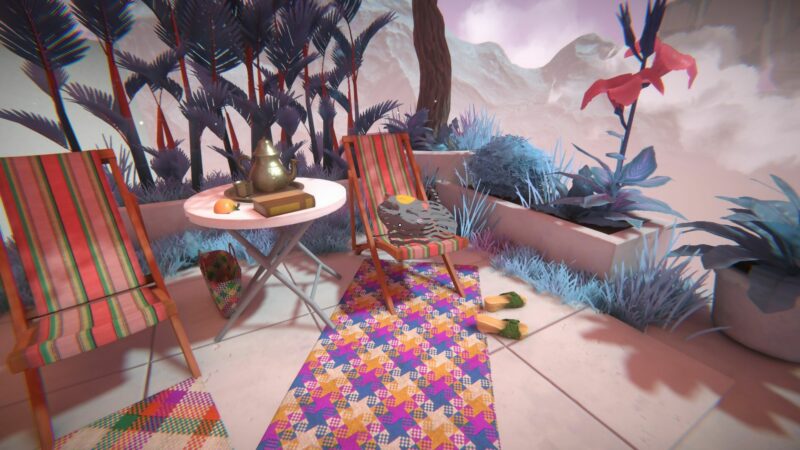
Credit: Sad Owl Studios.
But often, even when you think Viewfinder is starting to cook up more cunning schemes, leftfield goals are met by such straightforward solutions as finding a photocopier to duplicate an image, or taking a photo of something upside down, rotating it, then plonking it down the right way up, or throwing a few switches then standing in a certain spot. As you warp out of a level, instead of celebrating cracking a tricky conundrum, the real puzzle may be the look on your face, wondering: “Was that really it?”
Indeed, it’s telling that many of Viewfinder’s big smile-inducing moments revolve around cute visual confections rather than beauteous logic-bending. A stage that takes you into a pencil sketch, for example, then a painting, a child’s crayon house, and a cartoon, makes for an enchanting journey. Or, you might pick up a birthday card, place it to unleash the balloons depicted on its cover, then hop aboard one to ride into the sky. Yet in most cases, these are fun sideshows rather than cogs within puzzles themselves, leaving the sense that they might have been exploited more.
That sense pervades the premise circling the puzzles in Viewfinder too. Your business unfolds in a kind of cross between virtual reality and, well, reality. This realm of floating structures used to be inhabited by a small group of Earth’s leading lights, ranging from an artist to a botanist, who were using the physics-defying space to experiment on something of import to humanity itself. You venture in after they’ve all left or disappeared to figure out what happened.
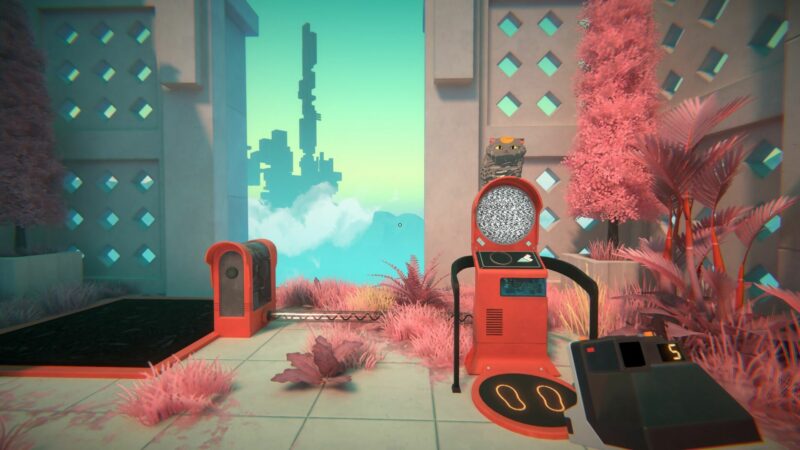
Credit: Sad Owl Studios.
With each chapter themed around the life and work spaces of one of these apparent thought leaders, there’s pleasure to be had in rooting around where they used to dwell. In this dimension outside reality, there’s no lack of lively décor, and you might just sit at times to admire the minutiae, from perfectly ordinary teacups and research books, to bizarre blue trees and enormous Jammy Dodger biscuits – the tasty result of a past experiment. Or you can read abandoned notes and listen to recorded conversations, all of which construct a picture of this cosseted techno-Eden, and the cracks that began to appear.
As mildly diverting as this is, though, it’s never much more. The absent characters seem like a decent bunch without becoming fascinating. A central theme that emerges about the importance of collaboration, as opposed to reliance on individual drive and untested tech, is easy to agree with, but quickly exhausts itself. And an emphasis on the wonders of creative thinking is hardly profound. The latter even galls a little, in fact, since it fits ill with puzzles that fall to repeated thought routines. When the resident magic cat, Cait, congratulates you for your brilliance, honestly, it feels a bit patronising.
Viewfinder does continue to feel playful throughout its duration, and remains capable of conjuring momentary sparks of joy or fresh formula twists to add to its bag of tricks. But unlike the most inspiring perspective shifting puzzle games, it doesn’t kick on, asking you to probe the outer limits of new wrinkles, or reconfigure your mind to accommodate them. In a cruel reverse of its glorious core idea, sometimes you stare at environments that seem deep with possibility, only to realise they’re paper thin.
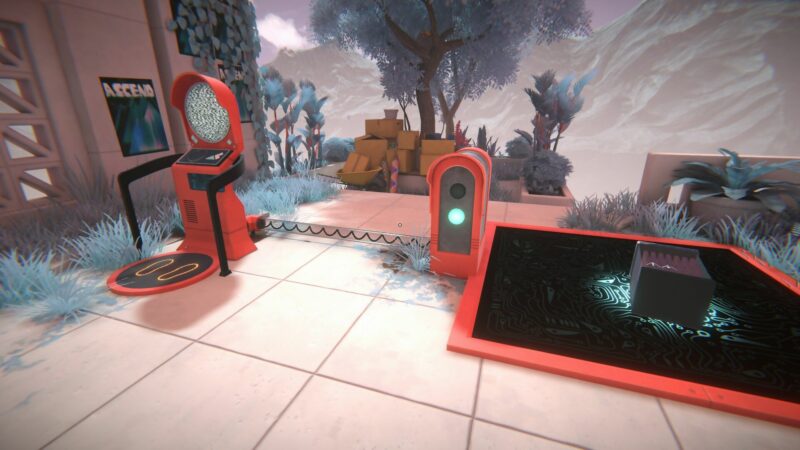
Credit: Sad Owl Studios.
Highlight
On one level, you pick up apparent screenshots of retro games, including Tetris and a NES Metroid-alike. Place the Metroid slide and you’ve now got pixellated platforms to hop about on, one of which houses a super jump power up that will boost you through the rest of the stage.
Verdict: 61%
Viewfinder’s puzzles are always playful, but never fully do justice to an inspired central concept.



